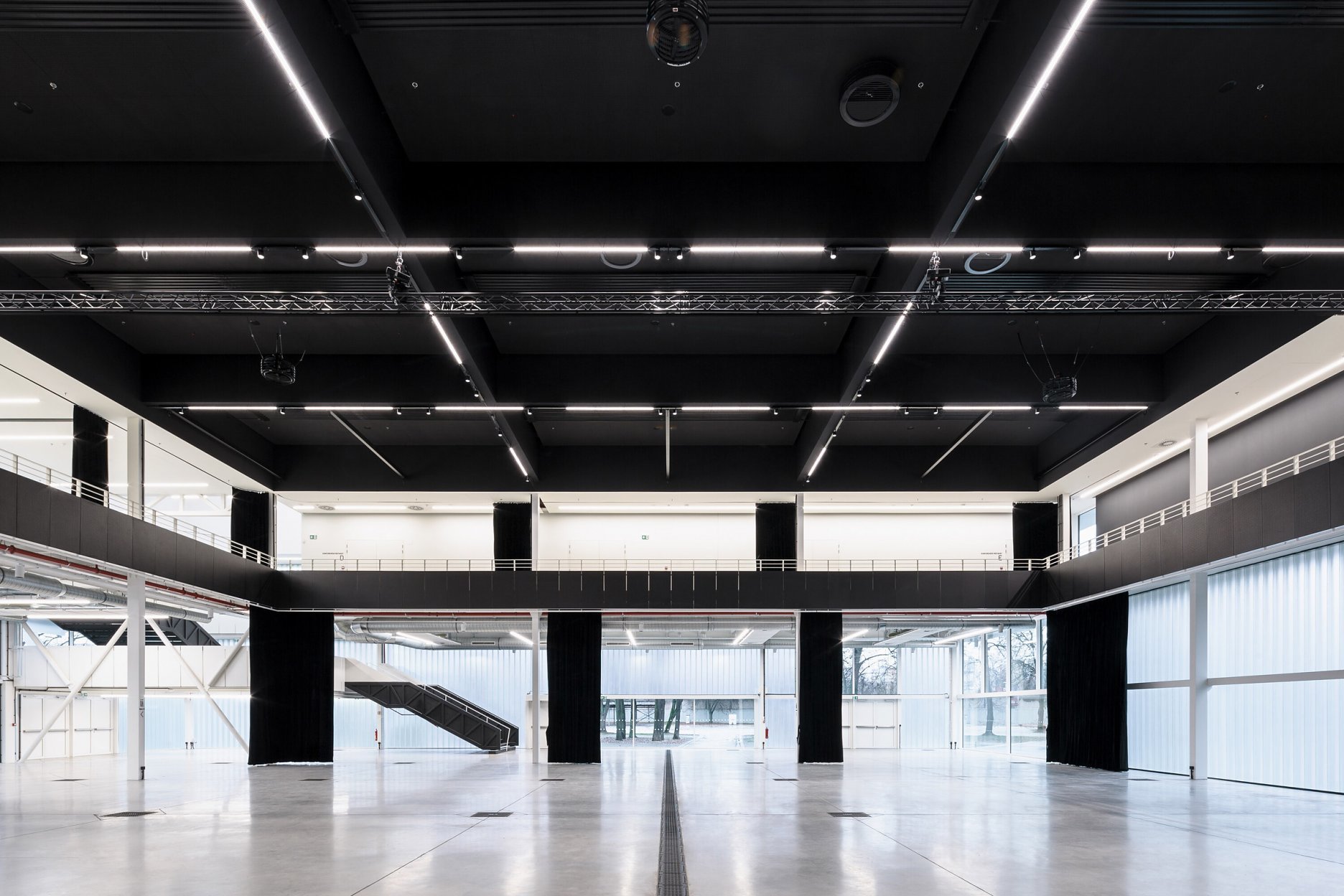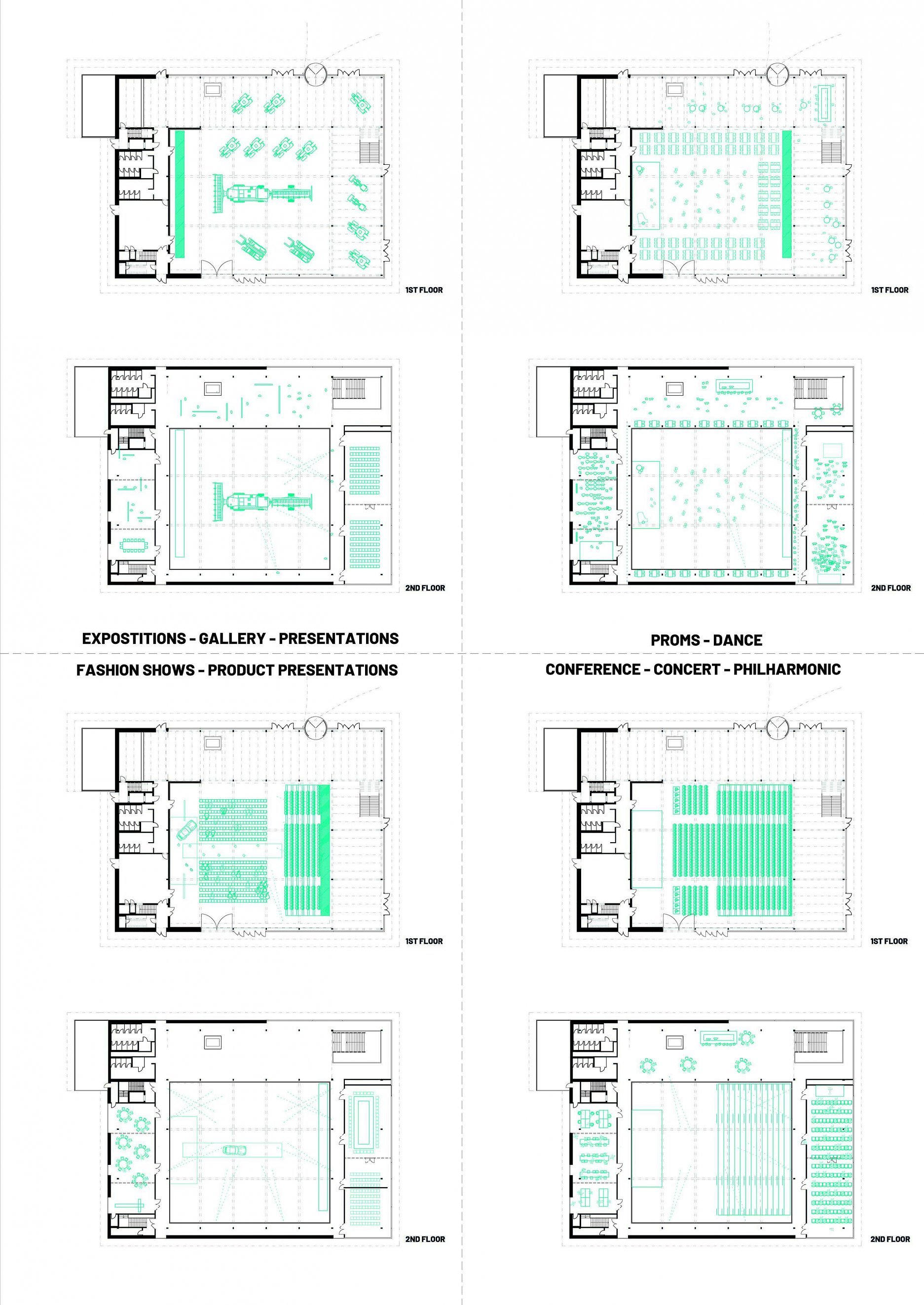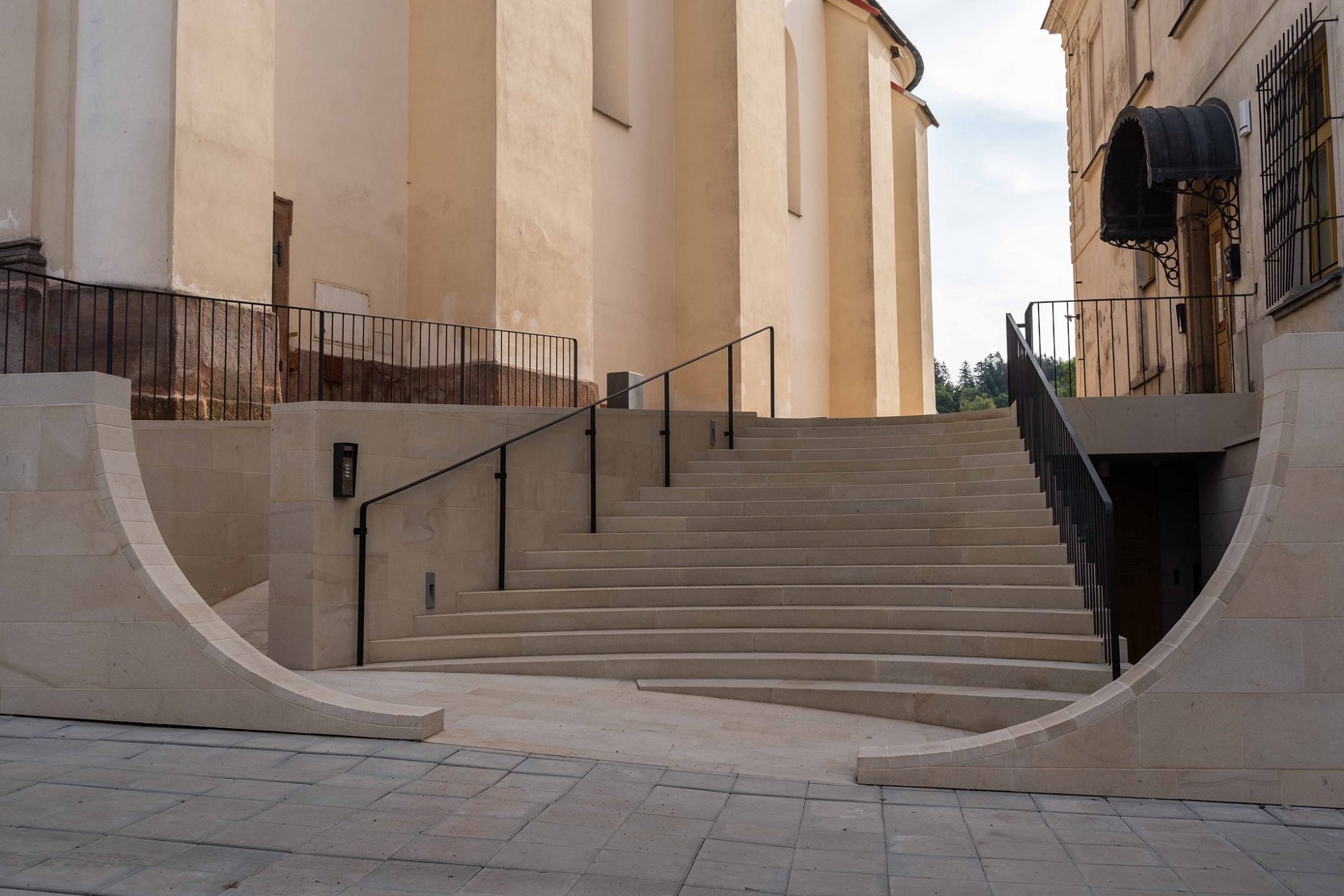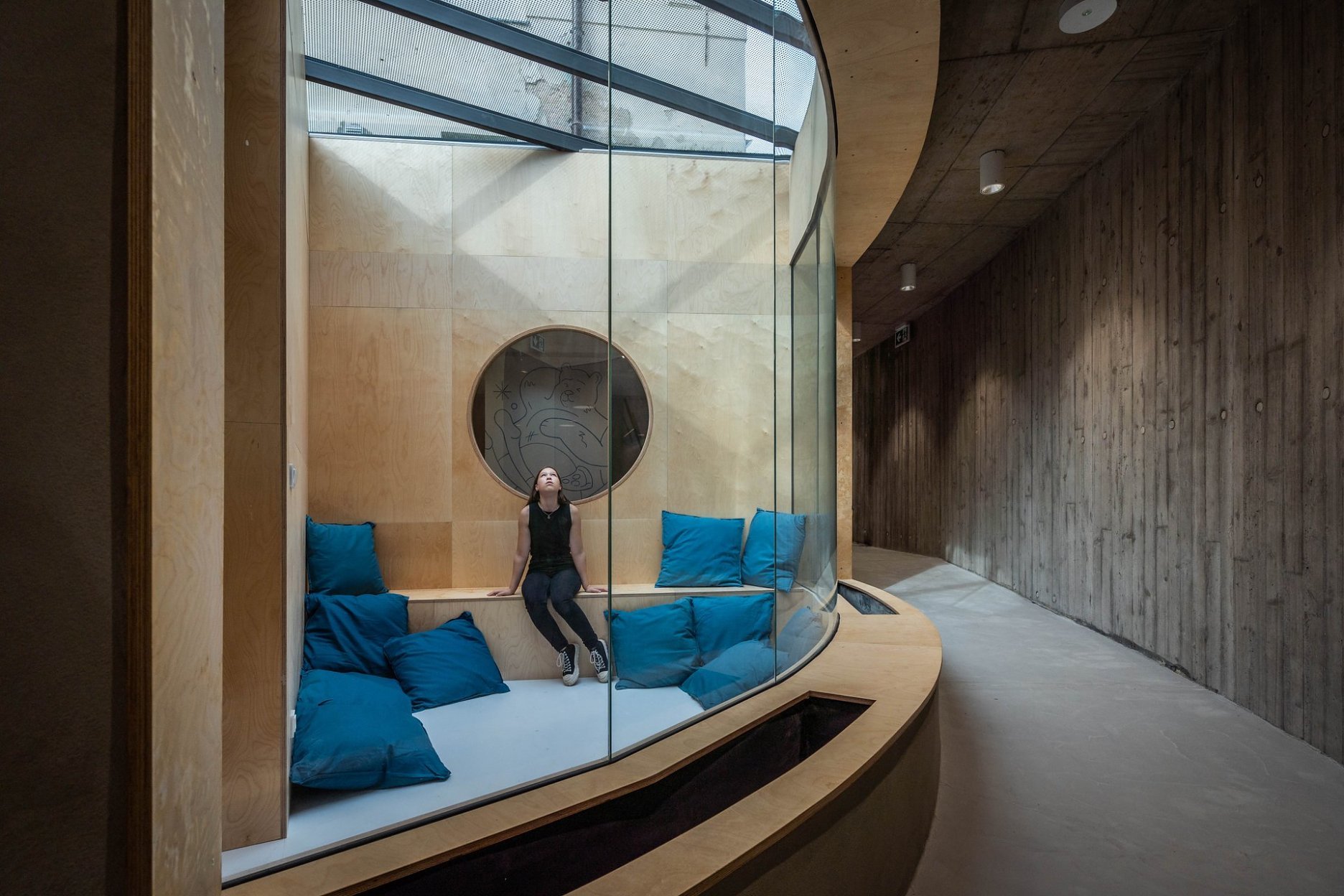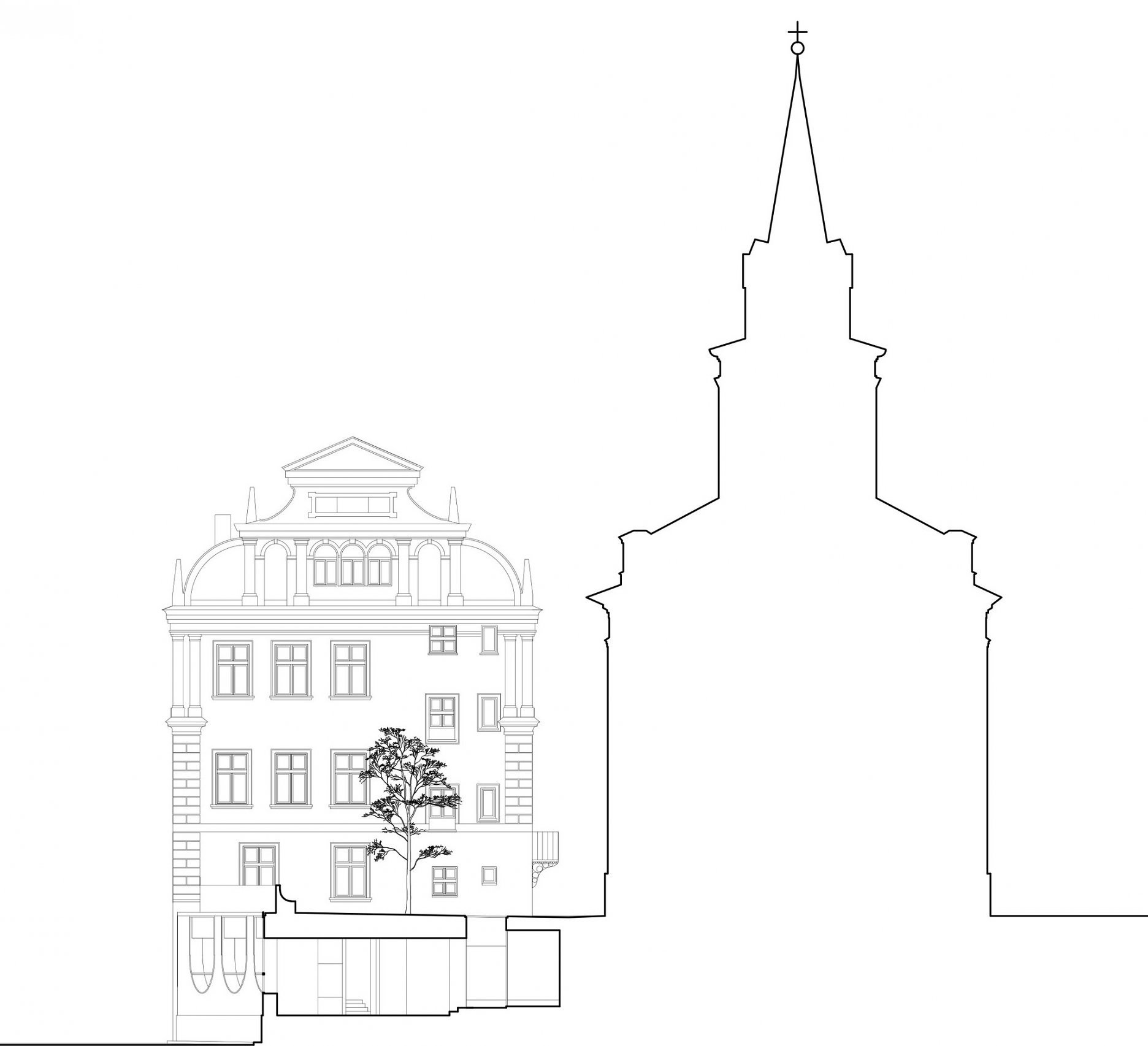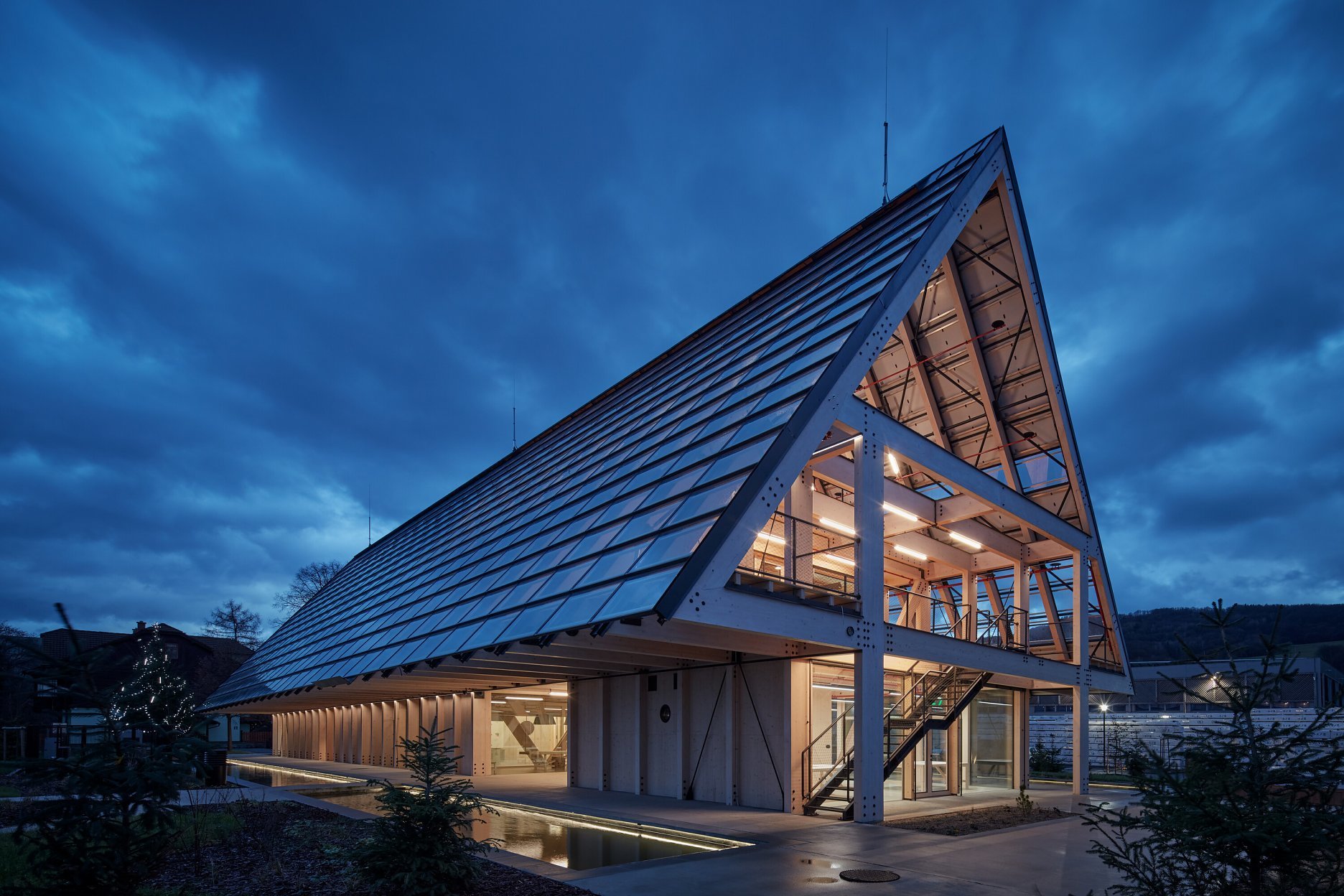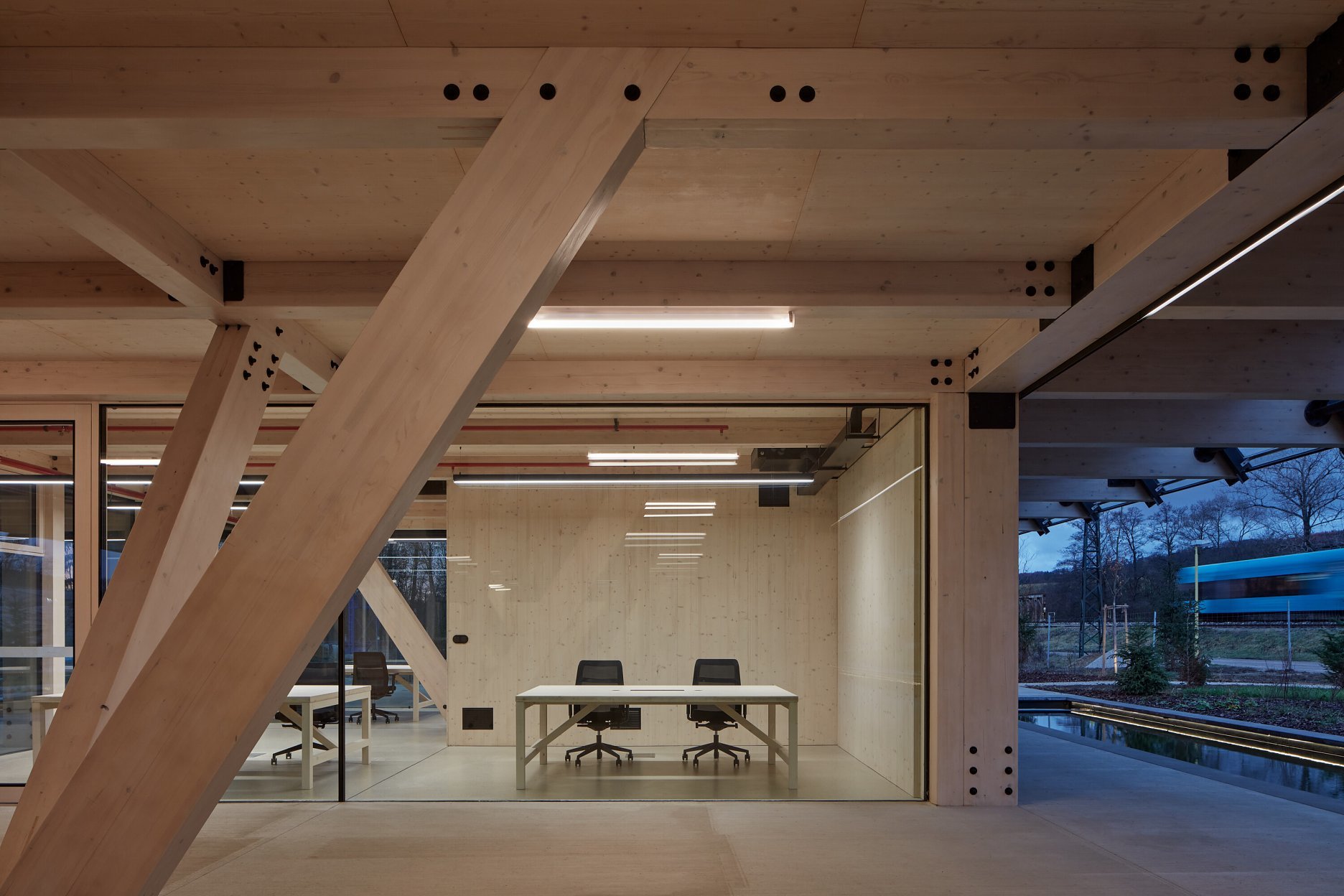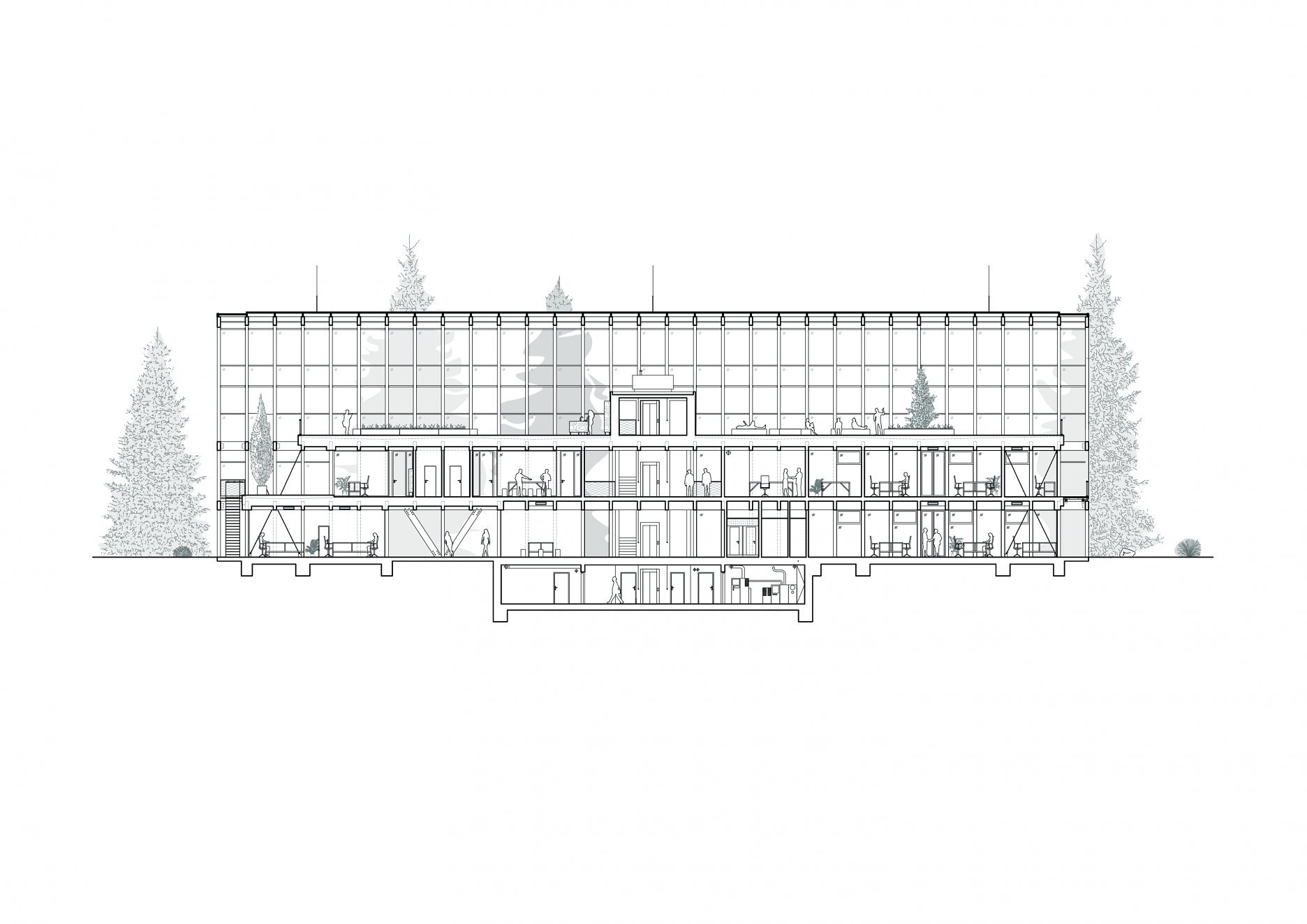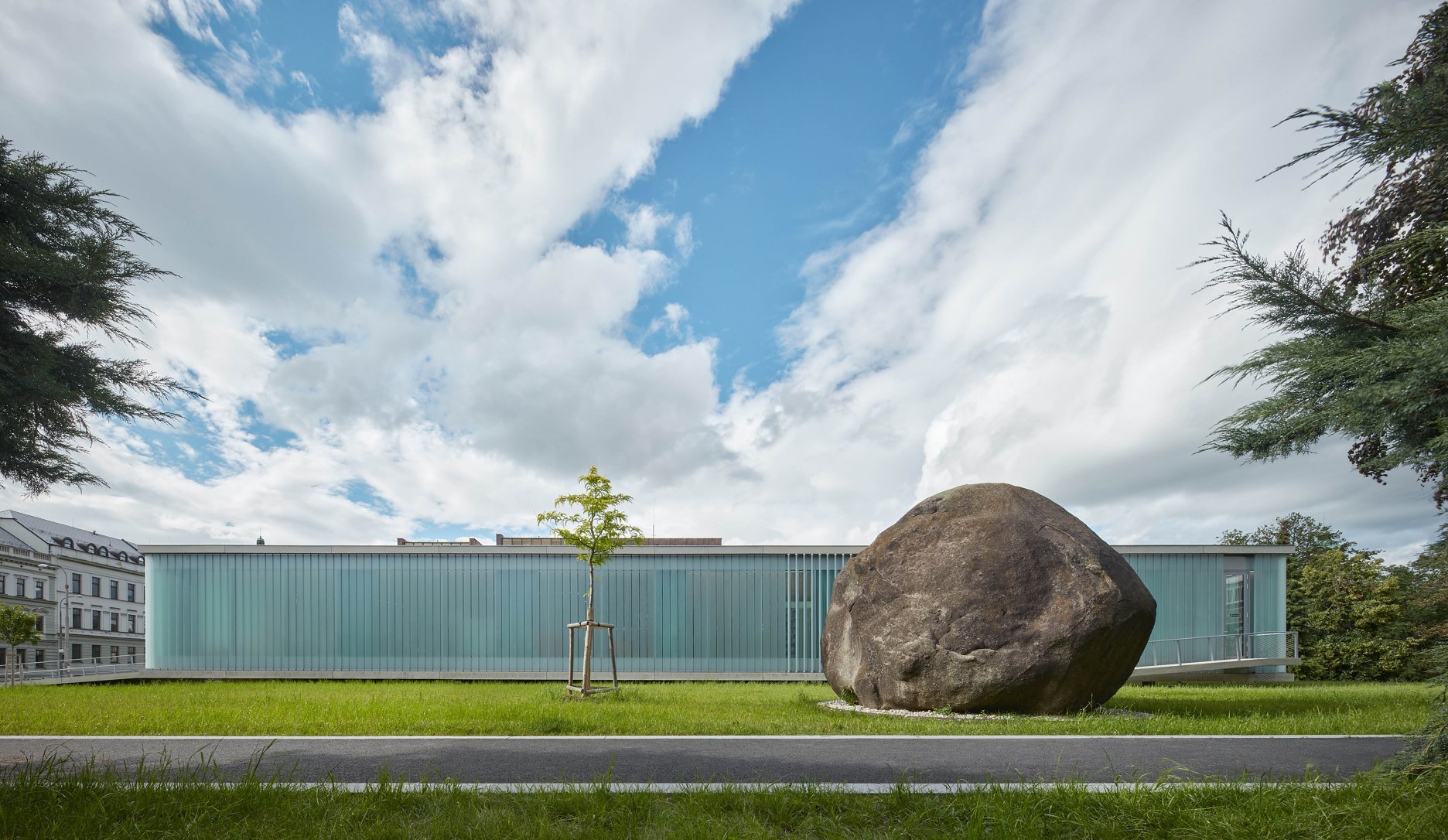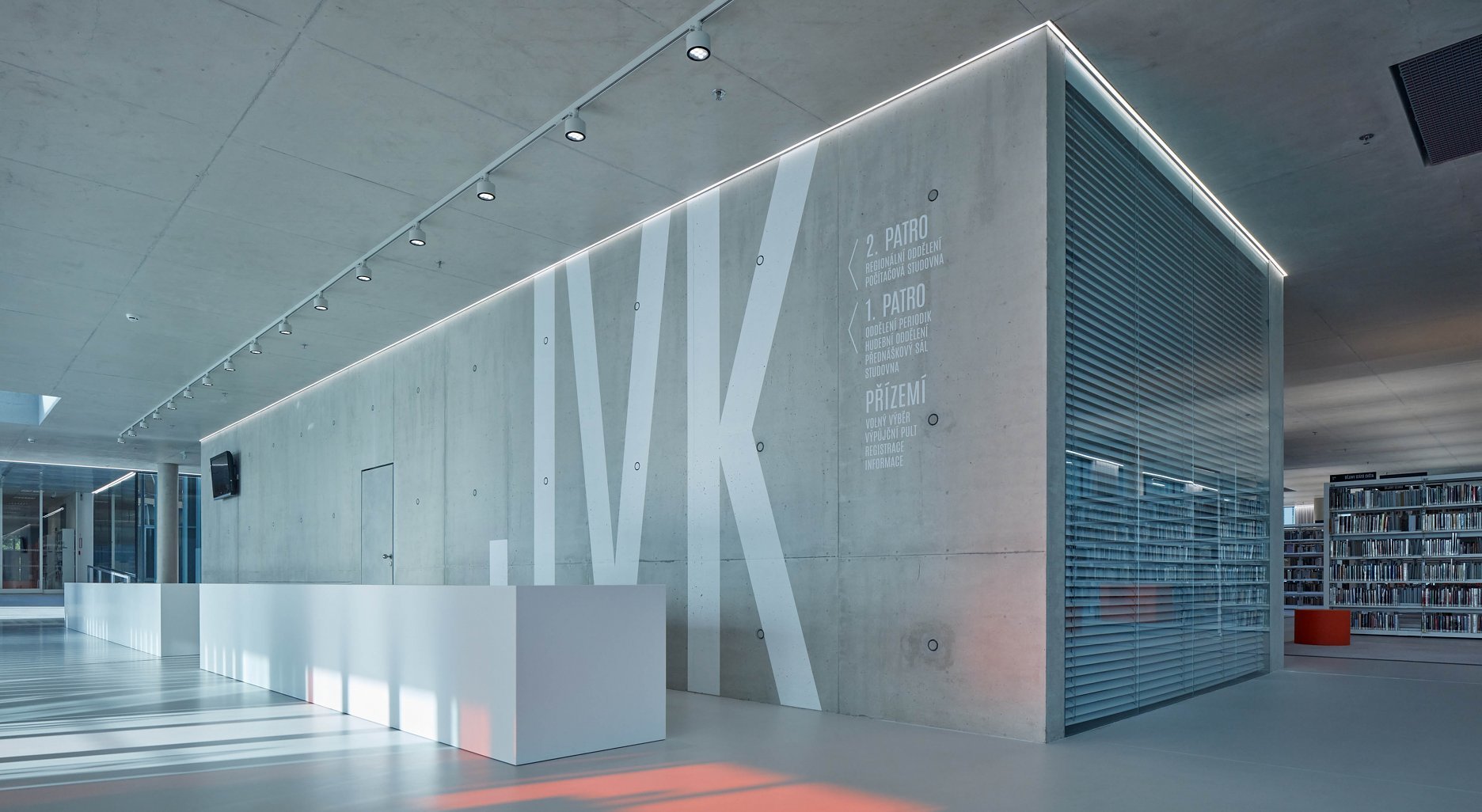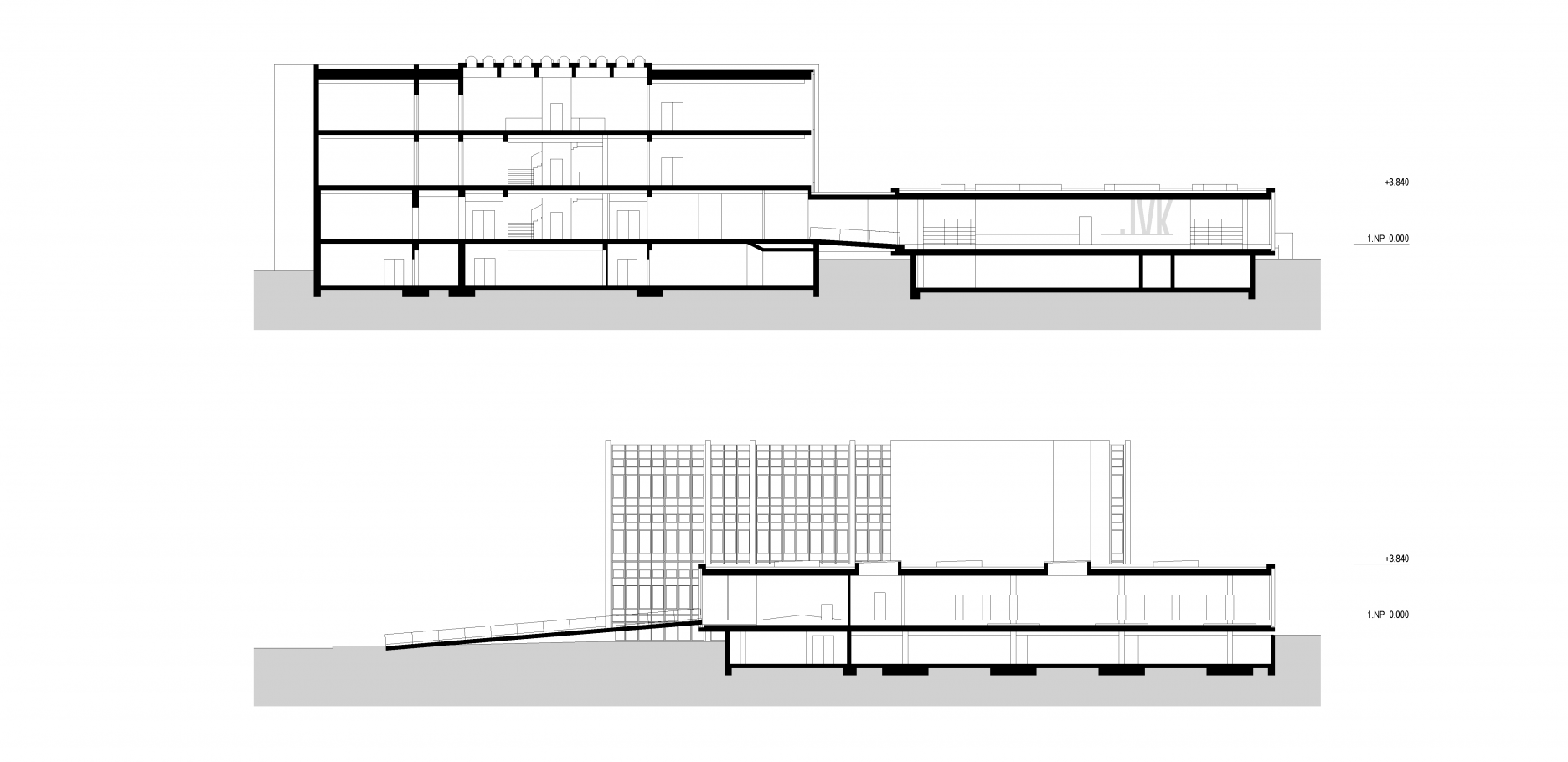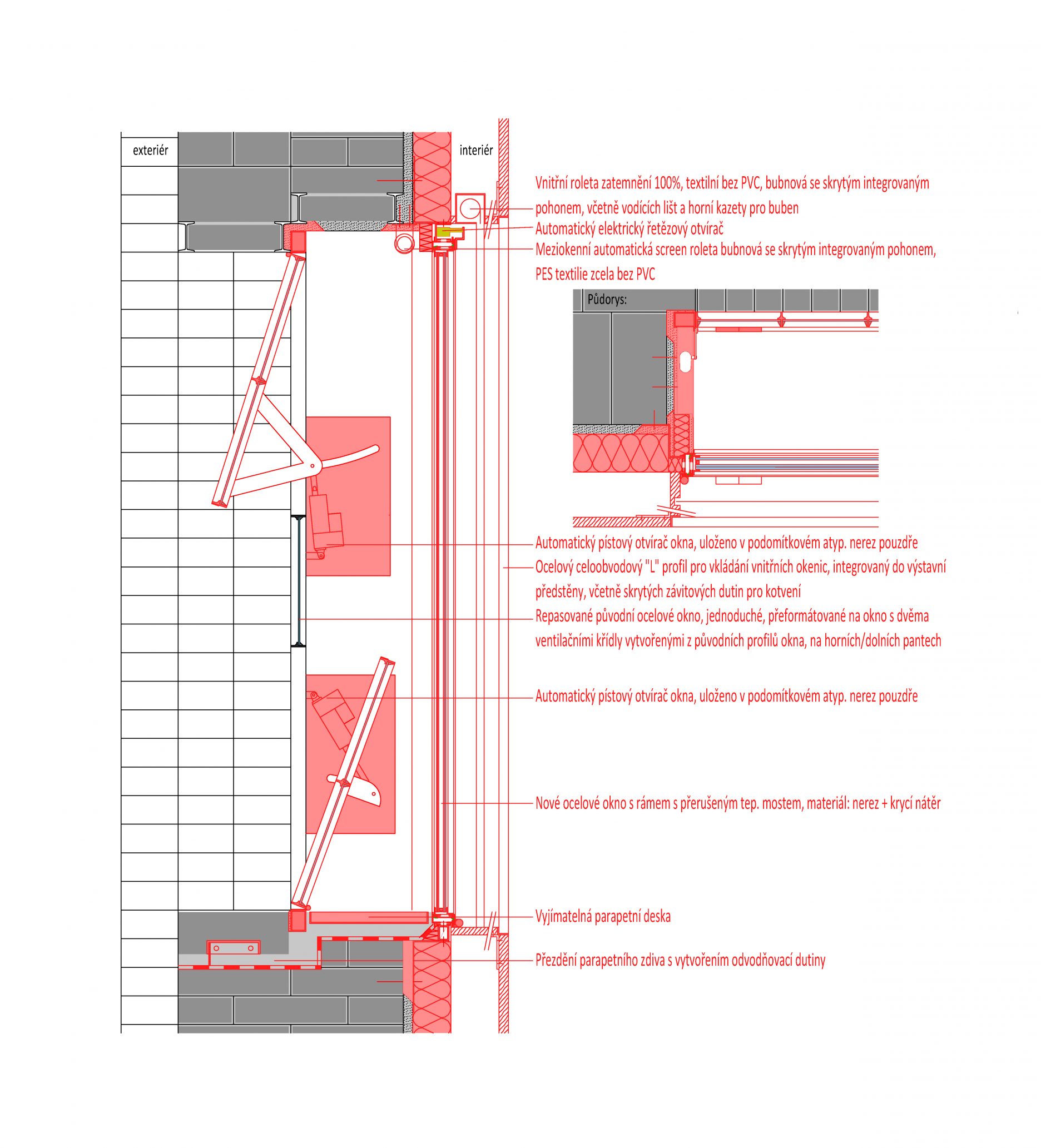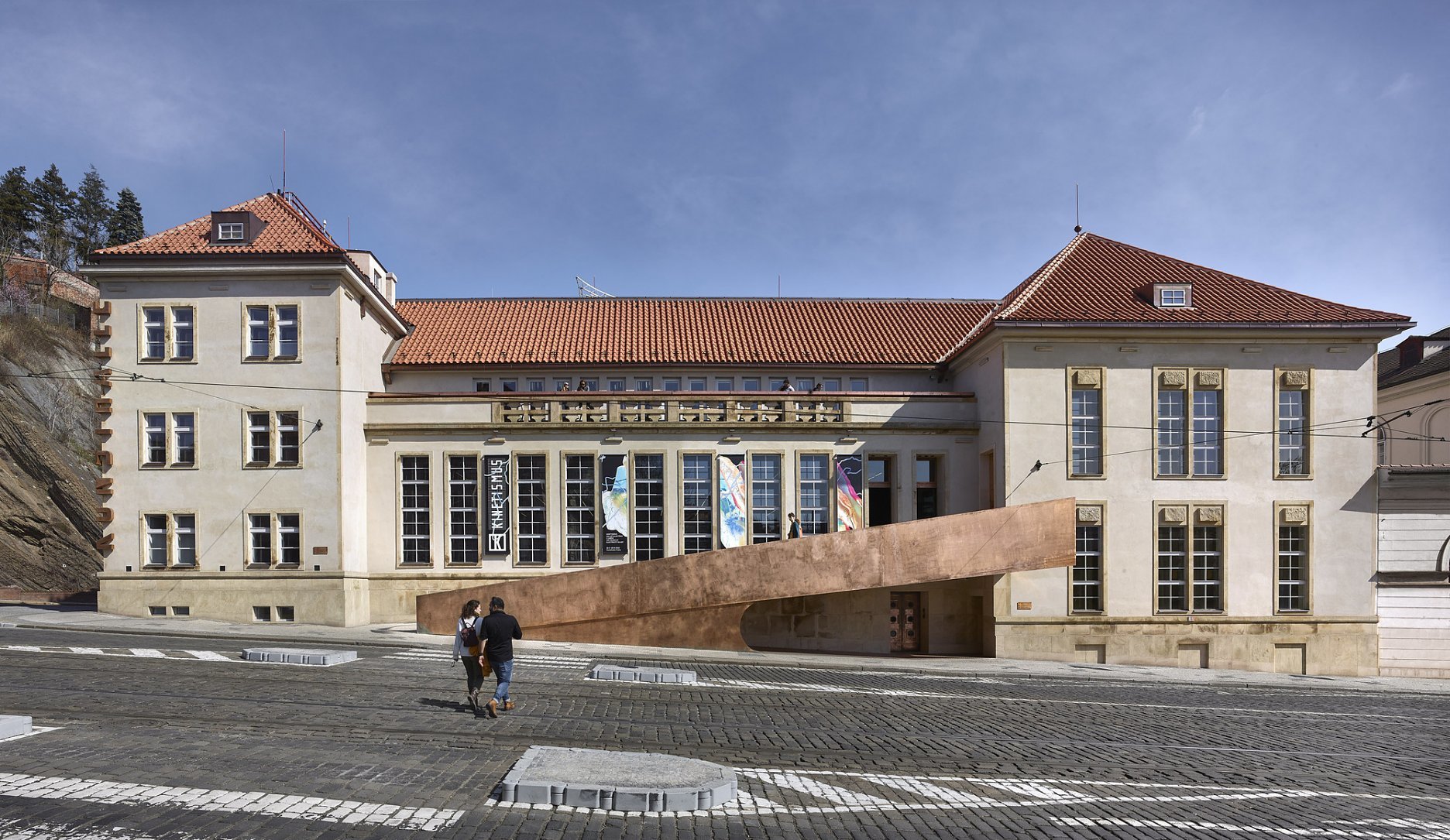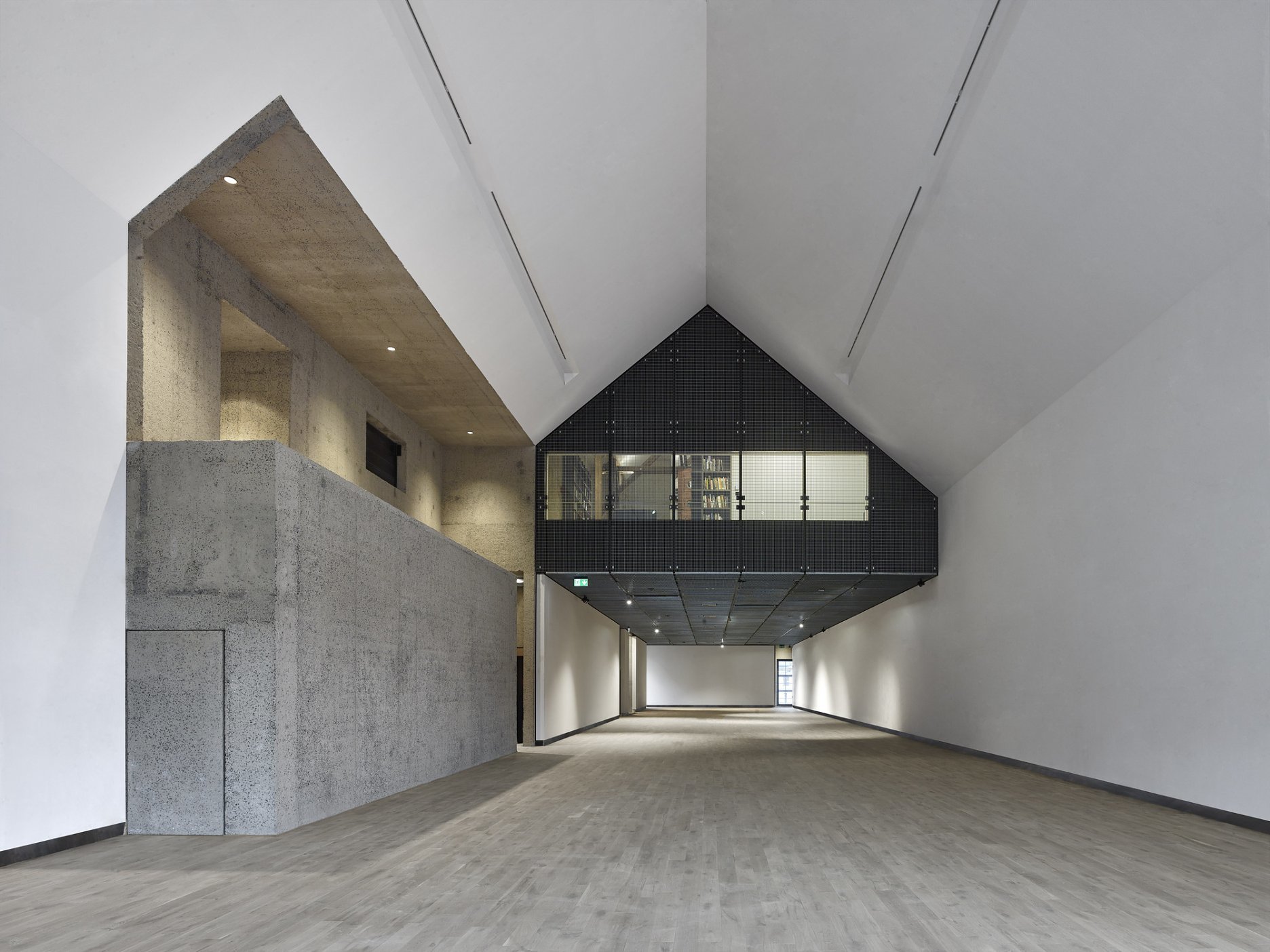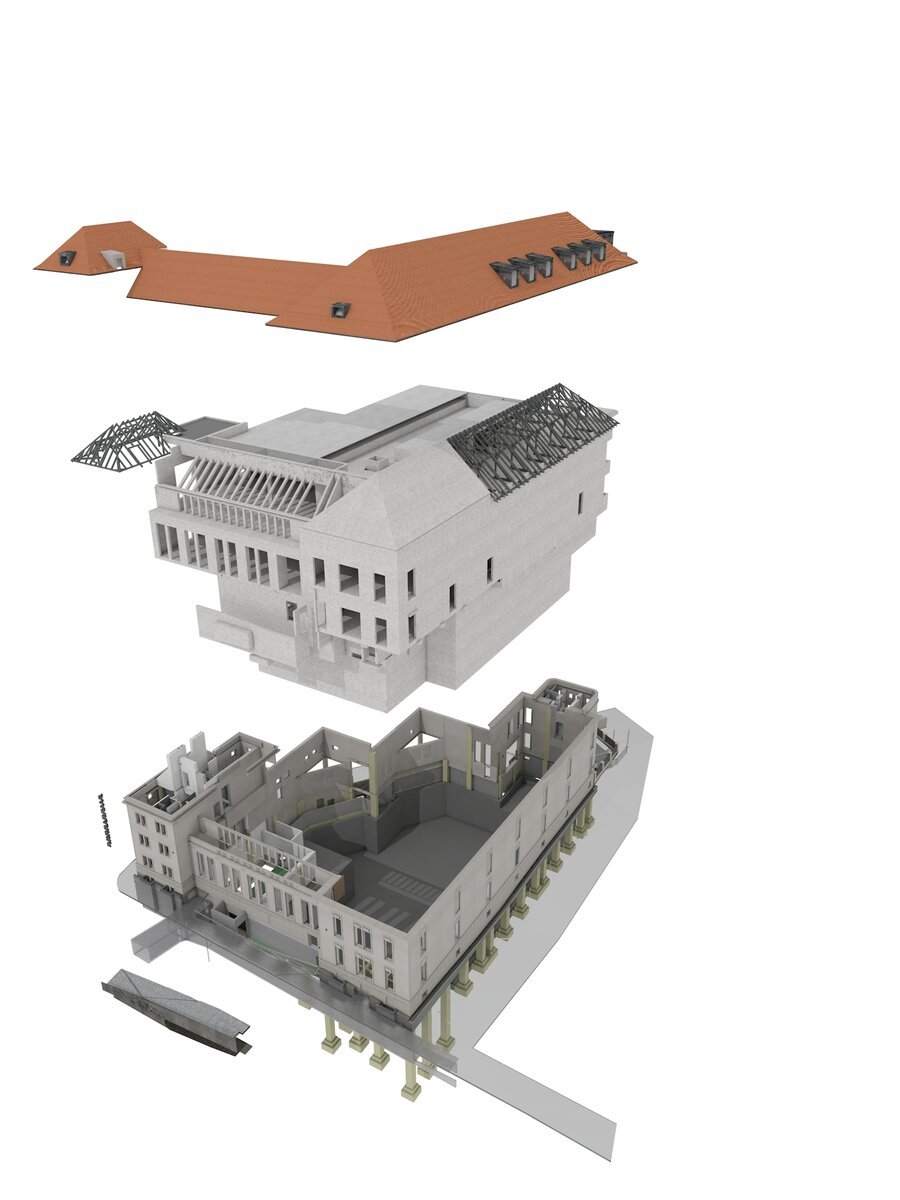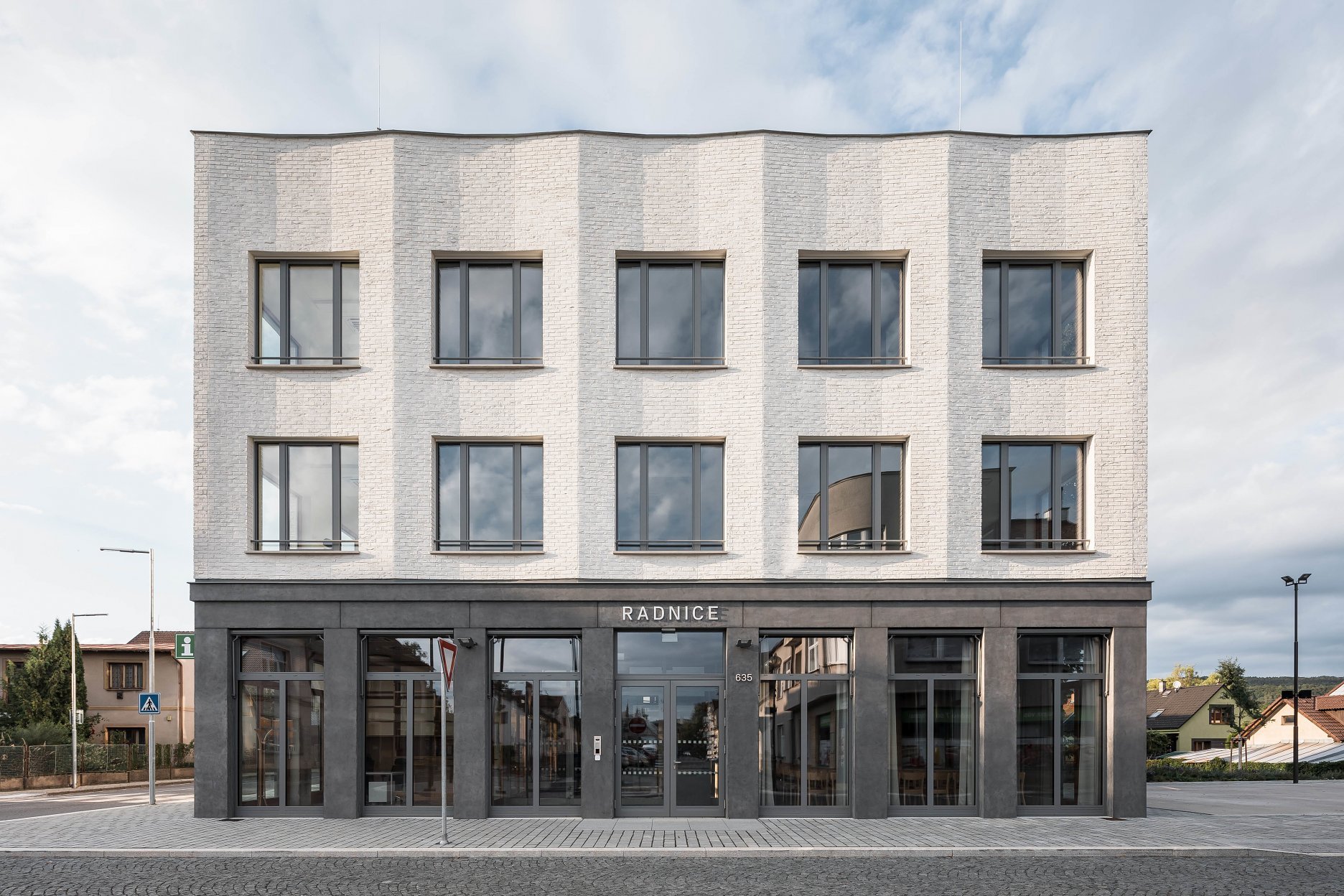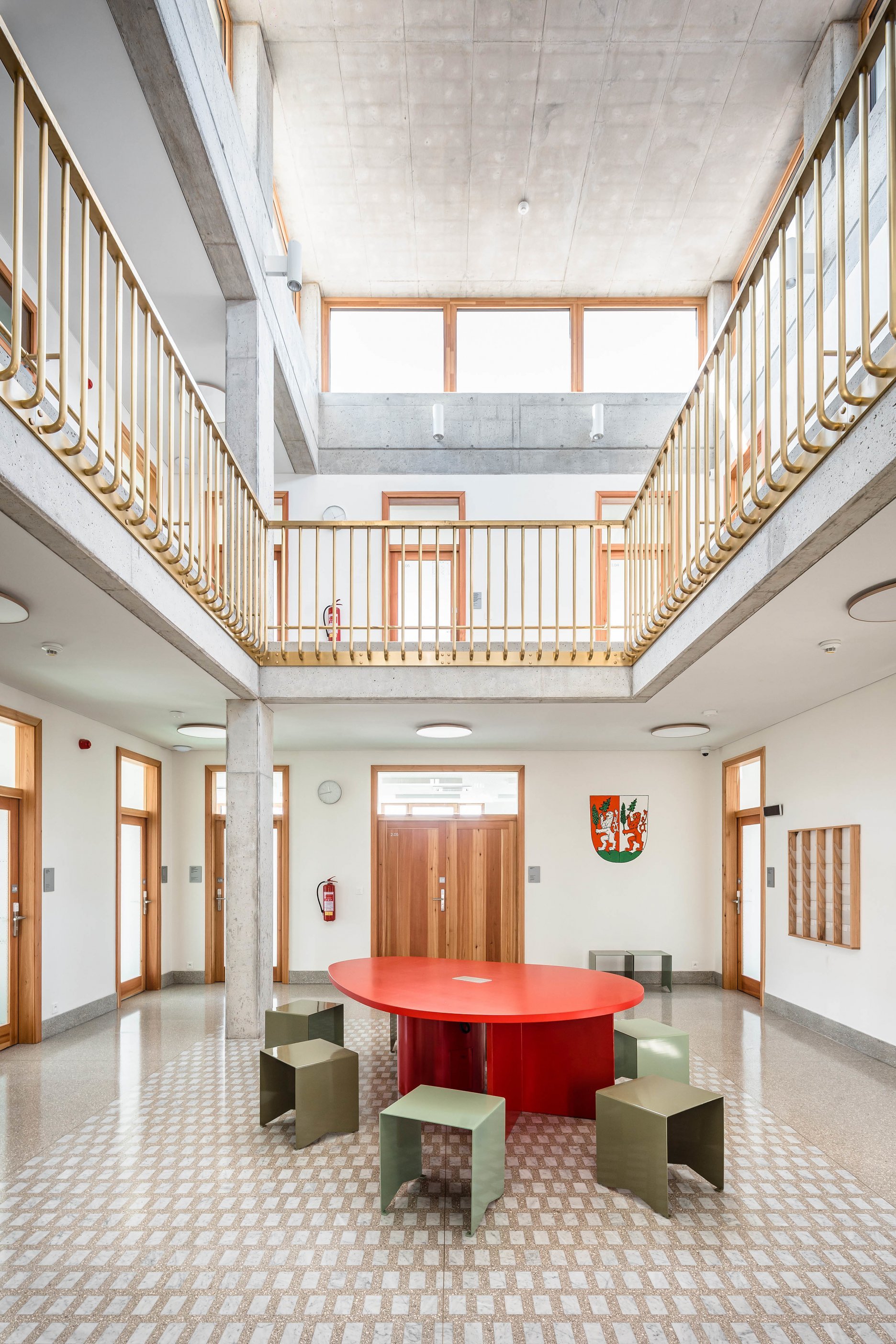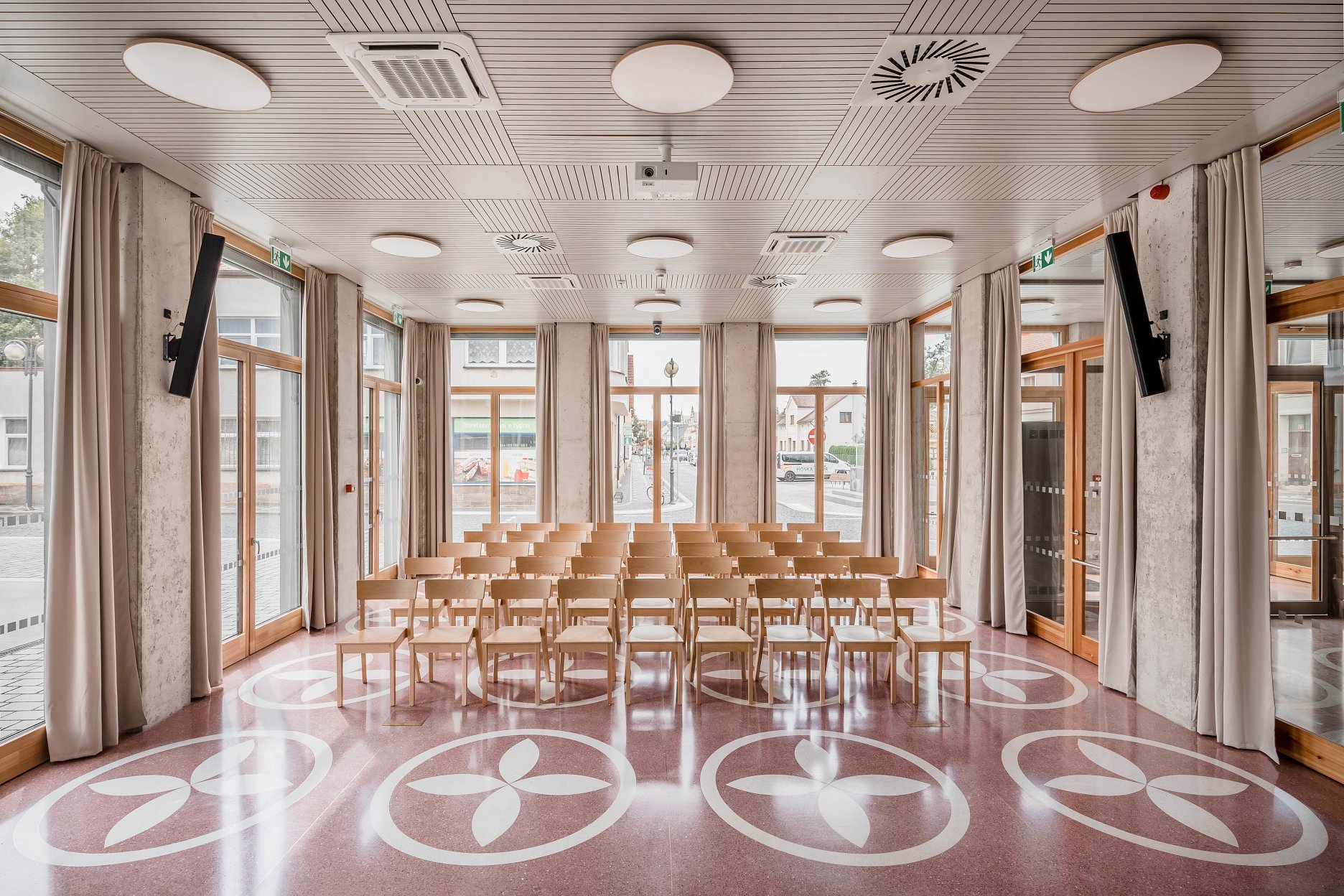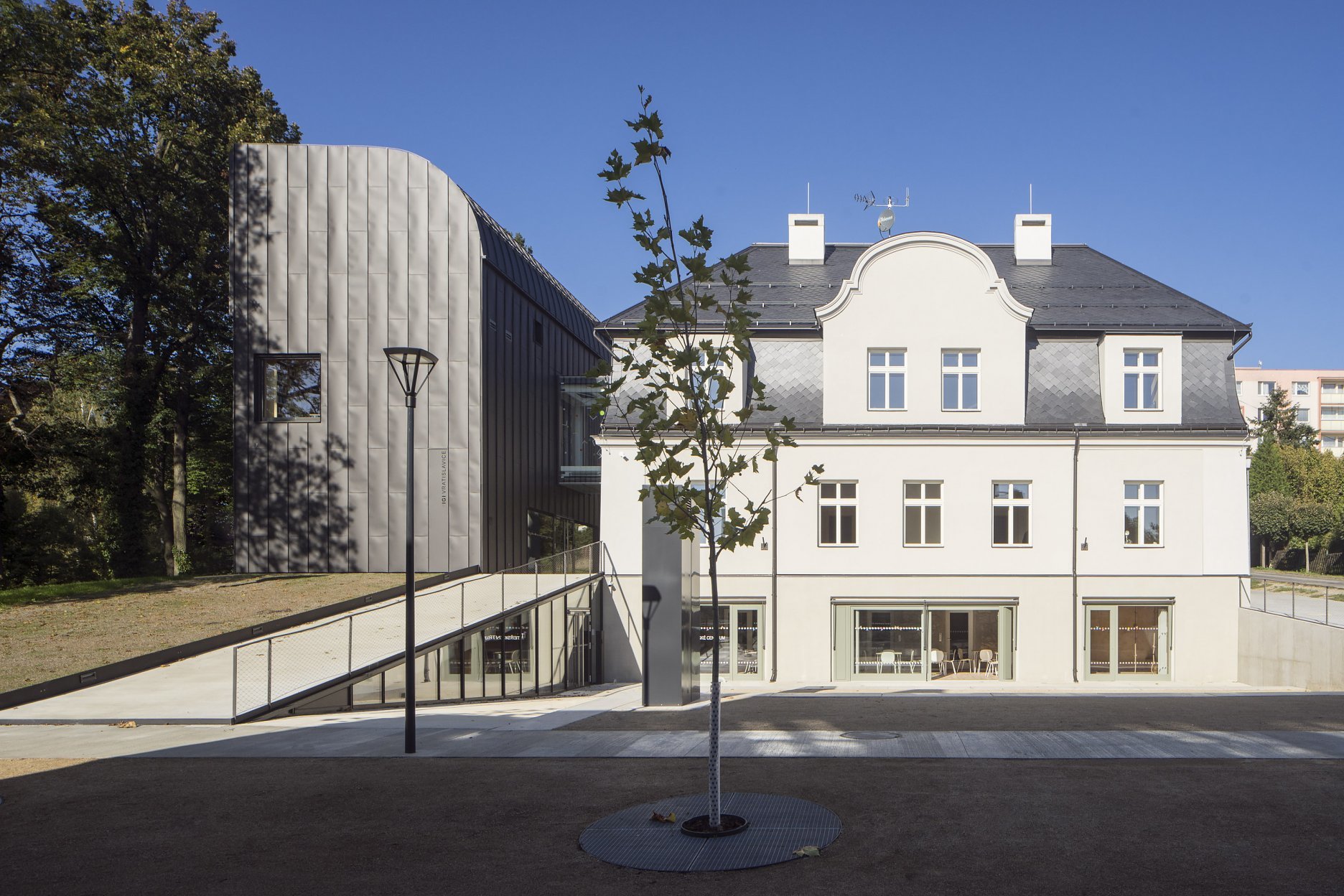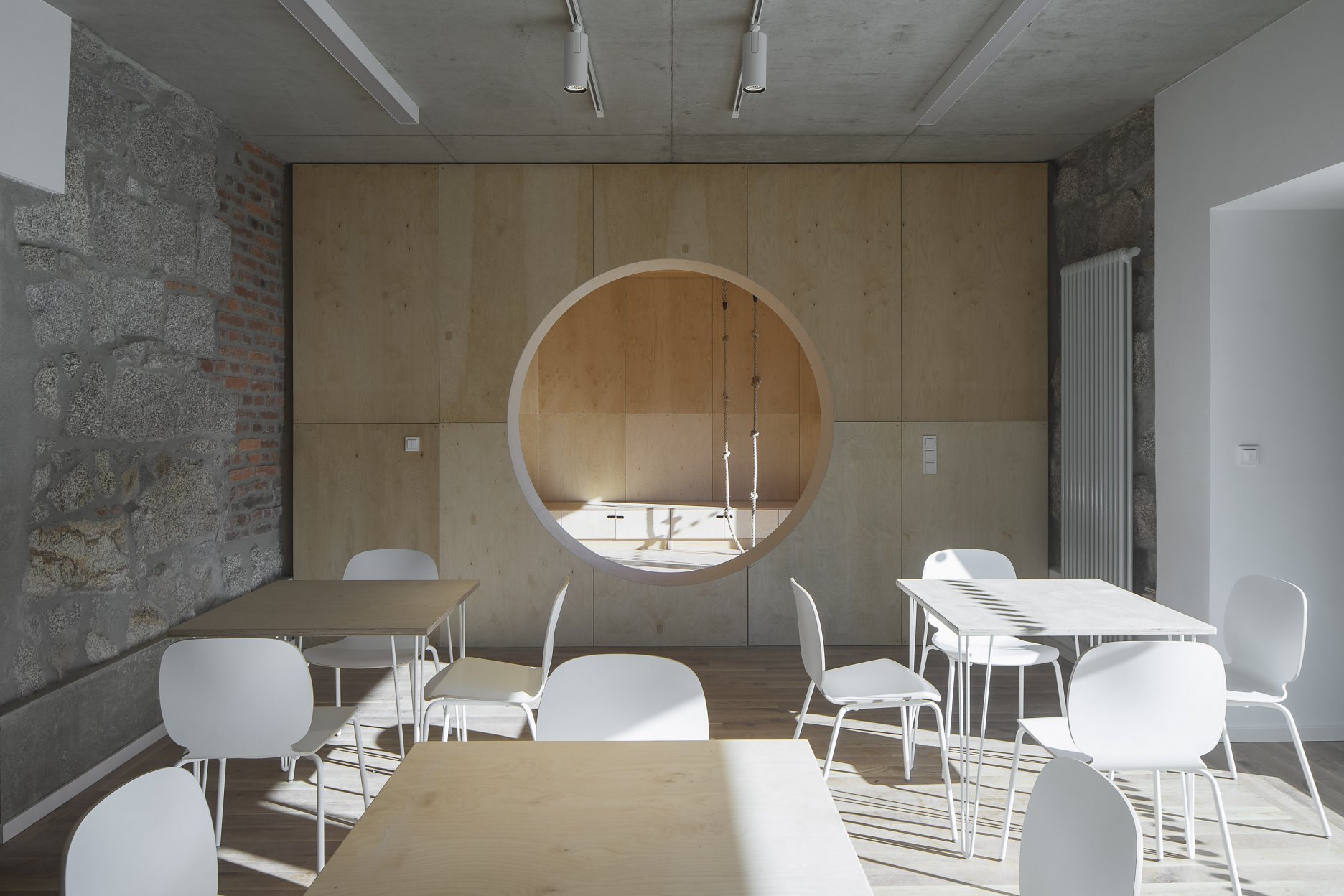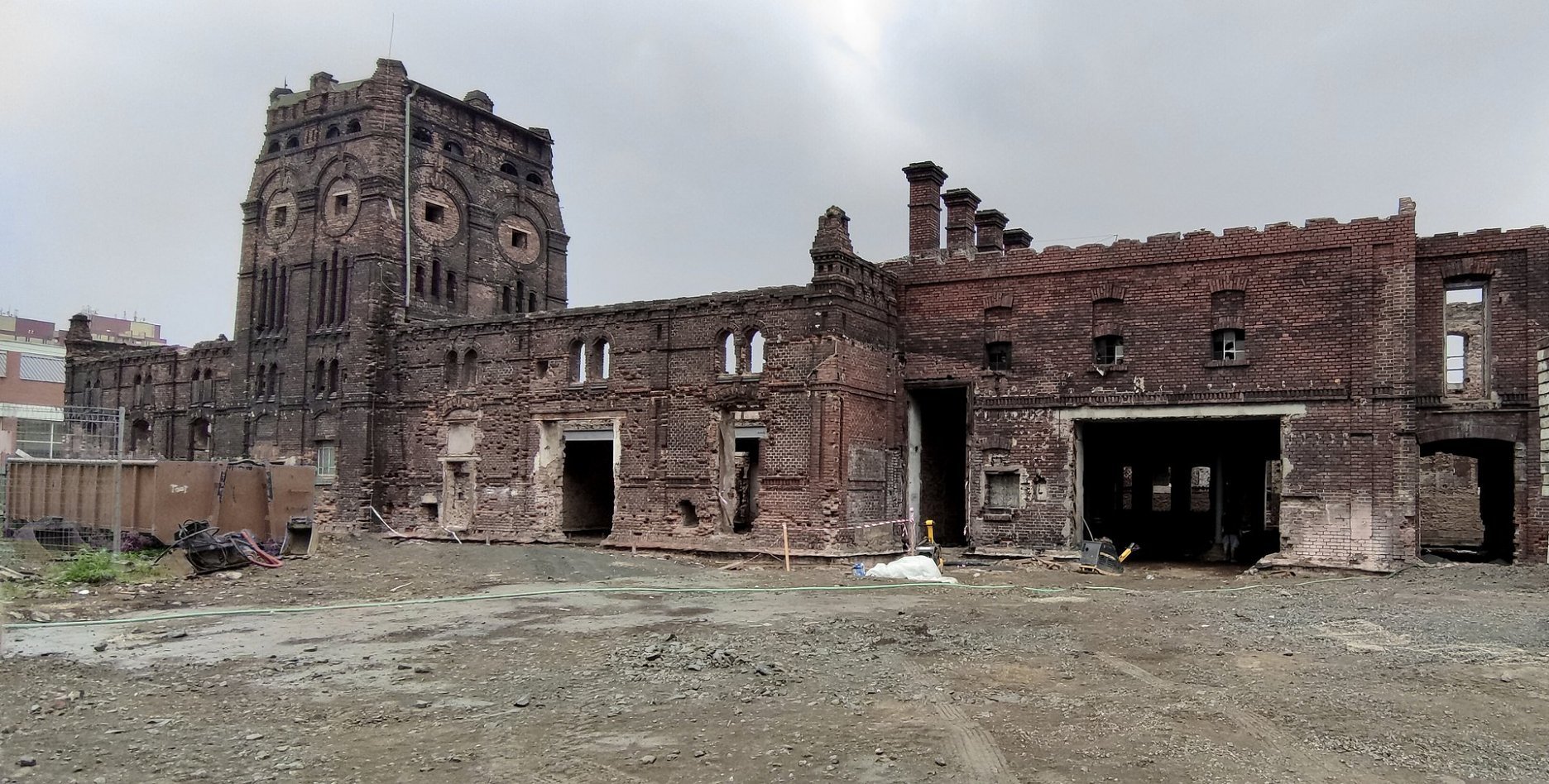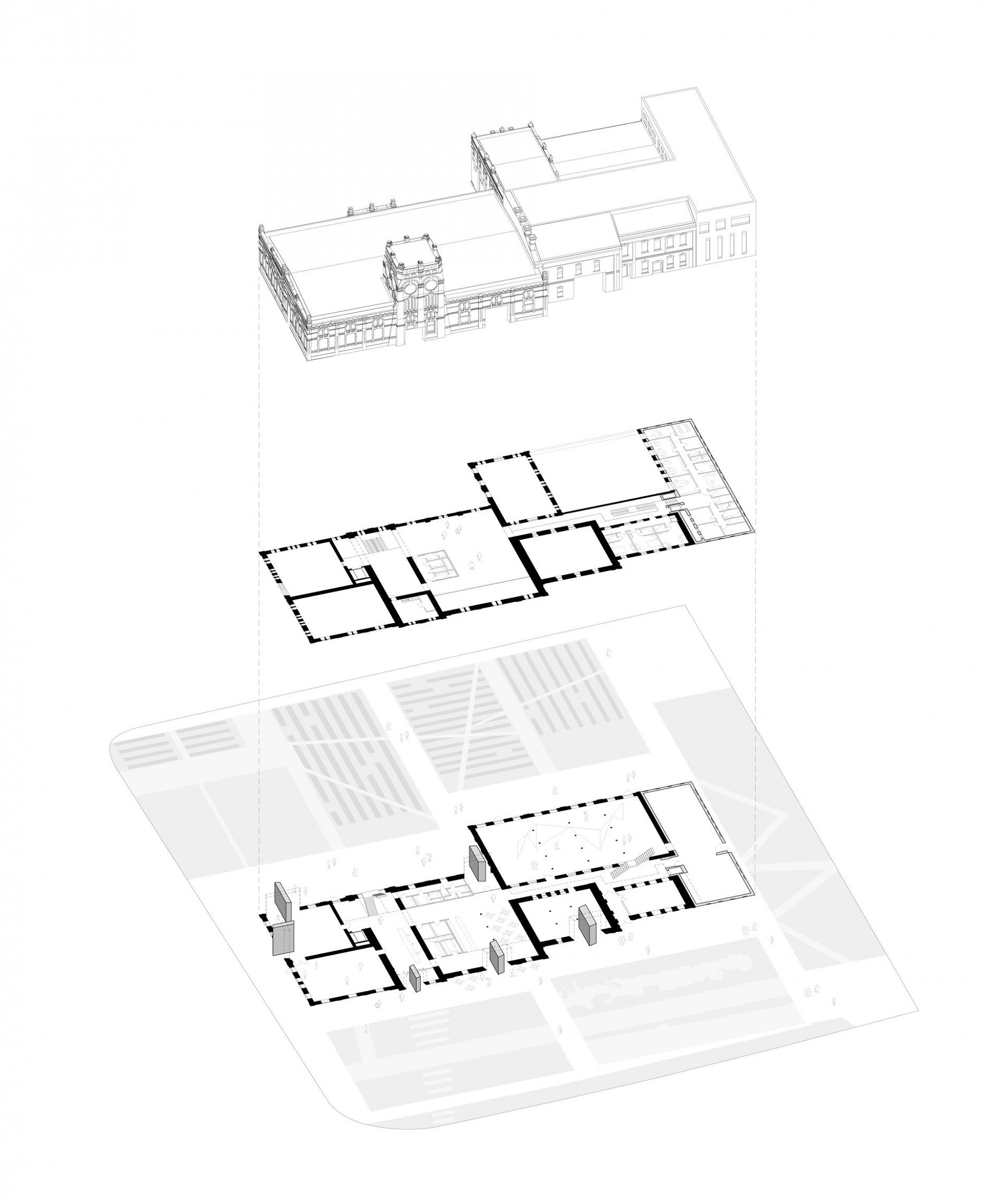Advertorial
Moderné plynové technológie: Efektivita a inovácie pre 21. storočie
Sumarizácia najdôležitejších inovácií, ktoré redefinujúcich využitie tohto energetického zdroja.
Utesňovanie spodných stavieb pomocou hydro-aktívnej fólie AMPHIBIA.
AMPHIBIA 3000 GRIP 1.3 od spoločnosti ATRO predstavuje modernú hydroizolačnú technológiu, ktorá spája vysokú odolnosť,...
Dekarbonizácia individuálneho vykurovania domácností – Green Deal evolučne a nie revolučne
Ambiciózne plány EK narazili na ekonomické možnosti domácností v jednotlivých členských štátoch –...
Minimalistické dvere IDEA – technická precíznosť a čistota prevedenia
IDEA DOOR od spoločnosti JAP prináša do interiéru čistý minimalistický vzhľad vďaka bezrámovému riešeniu a precíznej...
Schell Vitus – osvedčené riešenie pre sprchy a umývadlá vo verejnom sektore s viac ako desaťročnou tradíciou
Nástenné nadomietkové armatúry Vitus sú mimoriadne vhodné pre rýchlu a efektívnu...
Kompozitné okná predstavujú súčasnosť a budúcnosť
Okenné profily z kompozitného materiálu RAU-FIPRO X od spoločnosti Rehau sú v porovnaní s tradičnými plastovými profilmi mnohonásobne...
Myotis - stoly 2025
Najnovší sortiment stolov pre zariadenie interiérov...
Priemyselné sklenené priečky Dorsis Digero: svetelné rozhranie pre moderné interiéry
Spojenie moderného dizajnu, funkčnosti a svetla do harmonického architektonického prvku.
Význam prirodzeného svetla pre moderné a flexibilné pracovné prostredie
Kancelárska budova Baumit v slovinskom Trzine prešla premenou na moderné a udržateľné pracovisko. Architekti kládli dôraz...
Konferencia Xella Dialóg predstaví novinky a trendy v stavebníctve
Mottom šiesteho ročníku on-line konferencie odborníkov Xella Dialóg je Efektívny návrh budov 2025+: zmeny a riešenia
Murovací robot WLTR stavia svoj prvý dom na Slovensku
Robot WLTR predstavuje moderný prístup k murovaným konštrukciám. Vďaka automatizácii dokáže rýchlo, presne a bezpečne realizovať...
Nová éra bezpečnosti s I-tec Secure od Internorm
Okrem bezpečnosti majú okná aj elegantný vzhľad, pretože nie sú viditeľné žiadne uzamykacie časti kovania.
Skryté zárubne JAP – intenzívny zážitok z bývania
Dvere MASTER v skrytej zárubni AKTIVE je možné vyrobiť až do výšky 3 700 mm
Tienenie namiesto klimatizácie
Internorm stavia na energetickú efektívnosť a inteligentné tieniace riešenia.
BigMat International Architecture Award 2025 - vybrané diela
Slovensko vo výbere zastupuje šesť realizácií.
Česká architektúra nominovaná na EU Mies Award 2024

Pred časom sme predstavili slovenské nominácie. Dnes priblížime želiezka v ohni od našich západných susedov.
V prebiehajúcom ročníku Ceny Európskej únie za súčasnú architektúru, ktorá je všeobecne považovaná za najprestížnejšie ocenenie za architektonickú tvorbu na starom kontinente, je celkovo nominovaných 362 prác zo 38 krajín. Diela navrhli nezávislí odborníci, národné profesné organizácie a poradný výbor Ceny. Diela za Českú republiku nominuje Česká komora architektov a nezávislá expertka Jana Tichá. Kompletný zoznam expertov a organizácií nájdete tu.
Súťažnú prehliadku realizovaných stavieb organizuje Európska únia a Nadácia Mies van der Rohe v Barcelone od roku 1988. Do súťaže nie je možné prihlásiť sa. Výber je založený na nomináciách, ktoré vyberajú autority z jednotlivých krajín. "Odborná porota logicky nemôže navštíviť všetky navrhnuté stavby. Nominácie nevyberáme na základe fotografií, čo je inak štandardný postup. Za každým navrhnutým dielom je rešpektovaná inštitúcia (múzeum architektúry, komora architektov, výskumné inštitúcie) a odborník, ktorý stavbu osobne navštívil, má prehľad o lokálnom aj globálnom kontexte. Autority majú pri výbere absolútnu voľnosť," vysvetlil v rozhovore proces výberu koordinátor ceny Ivan Blasi.
V aktuálnom ročníku bude zasadať sedemčlenná porota v zložení: Frédéric Druot, Martin Braathen Pippo Ciorra, Tinatin Gurgenidze, Adriana Krnáčová a Hrvoje Njiric. Užší výber 40 diel bude zverejnený v januári 2024, piati finalisti o mesiac neskôr. Päticu stavieb porotcovia následne osobne navštívia. Nemajú teda k dispozícii len grafický materiál, ale môžu sa stretnúť s architektmi, s klientmi, s ľuďmi, ktorí môžu ponúknuť novú perspektívu... V samotnom finále hodnotiaca komisia určí jednu stavbu, ktorá získa Cenu Európskej únie za súčasnú architektúru - Mies van der Rohe Award, a jednu stavbu, ktorej udelí Zvláštnu cenu pre začínajúcich architektov. Výsledky tejto budú známe v apríli 2024.
Všetky nominované diela si môžete pozrieť na tomto odkaze.
Českú republiku v aktuálnom ročníku reprezentuje deväť diel:
Rekonštrukcia pavilónu "Z", Výstavisko České Budějovice
Autori: Ing. Martin Krupauer, Ing. arch. Pavel Kvintus, Ing. arch. Daniel Jeništa, Ing. arch. Petr Hornát
Spolupráca: Anežka Vonášková, Ing. arch. Jaroslav Kedaj, Zdeněk Fux, Ing. Milan Oktábec, Ing. Ladislav Krlín Krlín, Ing. Tomáš Štemberk, David Liebel
"Pavilion Z has been sensitively restored with respect for the original structure, which is well known to all locals. With the motto ´evolution, not destruction´, environmental and financial costs were saved. The smart interior design has then created a fresh multifunctional centre that has breathed new life into the building through various events.
The studio approached the renovation with the main idea of ´evolution, not destruction´, in which it perceives the main aspect of sustainability. The studio's philosophy is to bring buildings back to life from a design point of view, but also from a functional point of view, because one cannot function without the other. Therefore, it was essential for the architects to design a multifunctional space that will be able to serve all kinds of events year-round that would enliven the building and at the same time enable its operation. The design of the new pavilion goes hand in hand with functionality, using transparent materials that invite bystanders to visit the space. It is based on the original shape of the building which consisted of three enlarging blocks. The reconstruction builds on it seamlessly. The exposed steel skeleton is newly admitted and elevated to the initial principle of the interior.
The architects faced the challenge of bringing life back to the pavilion, which despite its size and location had only hosted a few events a year. A8000 came up with a clear vision to create a multifunctional space that would honour the original characteristic structure of the building, saving financial and environmental costs.
The architecture is based on three rising blocks, the smallest of which is at ground level, and the volume increases and becomes heavier towards the top. Inspired by the process of bonsai breeding, the partial "dead" parts were removed from the lower mass and glazed to give an airy and elegant appearance. Although the structure has been retained, the building was given a new minimalist shell that brought a whole new spirit to it. The interior is conceived to be as open and flexible as possible. To create space, all of the ancillary operations are concentrated in the outer-most wing, leaving the remaining part free. The pavilion can thus be modified by a system of draperies, from the gallery space to the closed concert hall. Thus, it can host agricultural events presenting tractors as well as a concert of the South Bohemian Orchestra.
The exterior of the pavilion is finished in white for both the facade and the roof so that the basic shape is legible. The lower two floors in the eastern part are designed as airy - designed with profiled greenish glass. This effect is enhanced by the large-scale structural glazing. A ´heavy´ roof mass made of white metal cassettes is fitted to the subtle lower floors. The façade as a whole holds a uniform texture - the width of the cassettes and the profiled glass.
The interior is treated in a neutral colour spectrum of white and black. The steel support structure is newly inscribed into the interior space, which is exposed and painted in white. The industrial essence is enabled by the exposed plumbing, where the fire alarm system is accented in black."
Nízkoprahový klub Nová Paka
Autori: Ing. arch. Jana Janďourková Medlíková, Ing. arch. Ing. Jiří Janďourek
"The building of the former school was built on the south side of St. Nicholas Church in 1721. Its appearance changed over time to meet the increasing demands on capacity and it was given its present Neo-Renaissance appearance in 1889 according to the design of the architect Jaroslav Bret.
The house will undergo a gradual reconstruction, at the end of which it will become a multifunctional centre for institutions such as a primary art school, a children's and youth house and, last but not least, a low-threshold club for children and youth at risk of social exclusion.
It is to this facility that the first phase of the renovation on the underground floor was dedicated. The centre is staffed by social prevention service workers who help up to 15 children and adolescents deal with their difficult life situation and create a background where they will feel safe and supported.
The low-threshold club is accessed via a descending ramp leading along the side of the building to the new entrance. From there, a new underground corridor leads to a hall with a cloakroom, which provides access to an interview room, an office with staff facilities and toilets. The underground corridor then descends past a glass atrium and ends in a spacious clubroom.
The clubhouse is divided into a computer corner, a games and creative area with a climbing wall and a relaxation room in the glass atrium. The rest room and the hall are illuminated by large skylights, which allow light through the glass walls into the underground corridors and the clubhouse itself. From the clubhouse you can reach the corridor and again the hall by a circuit.
The first phase of the renovation also includes the reclamation of the public space - the main entrance is highlighted by a semicircular opening in the stone wall and a paved gathering space in front of the balancing staircase. The new stone staircase is flanked by ramps to the low threshold centre and the space between the house and the church. The area around the church is made accessible and is connected to the ground floor of the former school. The accessible and landscaped common upper ground floor becomes a new public micro-space. It has a unified clay surface with concrete paving and is enlivened by a green roof garden with a gazebo and concrete bench."
Kloboucká lesní - nová administratívna budova, Brumov-Bylnice
Autori: Ing. arch. Jan Mach, Ing. arch. Jan Vondrák
Spolupráca: Pavel Srba (generálny projektant), Lenka Mičolová (grafika)
"The new headquarters of Kloboucká lesní with its thousand square meters embodies the main principles of sustainable design. Ecological thinking, the potential of an enviromental approach to building construction and other opportunities and challenges that await us in the future are all reflected in the new building.
The building has the shape of a traditional barn with a gable roof. However, a modern building is hidden in its bowels, serving the needs of a company that takes care of the forest. The building has three floors above ground and one underground. The cellar hides technology and storage spaces. Offices are located on the ground floor and first floor. The top floor of the building under the roof is a covered outdoor space, which is used for larger events, lectures or workshops. The supporting structure consists of a two-storey, rectangular frame made of glulam.It was strung together at a centre distance of 1.80 metres to form a kind of long building with a rectangular ground plan of 56 x 18 metres and a ridge height of 12.5 metres.
Imagine a world where the building materials for your house don’t travel half the way across the globe. Where you know the forest, where the timber for your house came from. The new Kloboucká lesní headquarters is a laboratory. It studies faster ways of constructing buildings and better ways of working with energy and materials to minimize their environmental impact during their manufacturing, use and disposal at the end of their life cycle. Not a drop of water is wasted, nor a joule of energy lost. Experience is turned into development. Considering the current wood-based construction - we want to take a step back, look at the big picture, understand the principles and connections, and then reassemble the process with a new perspective. We see new opportunity and new development potential in the sustainable, frugal and socially responsible philosophy. Today, when the construction industry is paralyzed by excessive bureaucracy, staffing and material shortages, is the right time to start over. Sustainably, efficiently, economically.
The building is a combination of contemporary technical solutions and common sense. The load-bearing structure uses a glulam timber frame, a concrete core and steel bracing. modular structure provides a great variability of use, even in case of future changes of function. The wooden structure is made predominantly from glulam timber manufactured only about a hundred meters from the site. This timber comes predominantly from the surrounding forests. The building’s PV array produces enough energy to meet its requirements. In fact, the majority of all electronic equipment in the compound is using solar power at the moment. Glass panels cover the northern part of the roof to let more light into the attic space. Rainwater roof runoff is stored in open ponds and used for irrigation and for cooling during the summer months. By reflecting the daylight, the water surface also helps bringing light deeper into the building. The source for heating of the building and the whole area is the central boiler house, where the main fuel is wood chips of own production."
Dostavba Juhočeskej vedeckej knižnice v Českých Budějoviciach
Autori: Akad. arch. Ladislav Kuba, Ing. arch Tomáš Pilař, Ing. arch. Kateřina Jechová (spoluautorka), Ing. arch. Patrik Obr (spoluautor)
Spolupráca: Ing. Ivo Stolek
"Elementary volume of extension of Research Library of South Bohemia responds to sculptural vertically structured form of existing building from 1970's. The building is designed as one level monolithic pavilion floating above the ground with fully glazed facade allowing views into surrounding landscape.
Proposed elementary volume of Research Library of South Bohemia responds to sculptural form of existing building from 70's of the last century, which reflects time of its origin and original function of Museum of working class revolutionary movement. Quality brutalist architecture of this building has highly fragmented form, however the layout is not really suitable for the function of library with open shelves collection.
The library extension is designed as one level pavilion floating above the ground with fully glazed facade allowing views into surrounding landscape. The outer skin is created by vertical revolving slats, which work as shading element and at the same time separate events inside and outside the building. Inner space of deep layout of the building is lit by square rooflights located above the study spaces.
Compact horizontal form reflects the client's brief which asked for enlarging the space for visitors with open flexible plan, open shelves collection and representative barrier-free entrance into the library, which is designed in a form of sloping pavement from Lidická třída. Connection of both buildings is provided by ramp in glazed tube. Passage through the park towards the river Malše opens on the side of the building. Art elements - Novohradský cobble and War Memorial of battle by Zborov.
Activation of the concrete core, when the mass of the concrete is used for accumulation of cold or heat is used in the design. The aim is comfortable inner climate. The heating and cooling is economical and environmentally friendly due to lower temperature gradient. Night natural ventilation cooling is also envisaged in summer period.
Higher solar gains during the summer are prevented by green roof, facade triple glazing with shading protection and glazed revolving slats with imprint, which are driven by motors and function as sun shade. Rooflights are shaded by exterior screen blinds.
The extensive green roof not only provides better thermal insulation but also helps to retain the rain water and slows its outlet. The underground tank serves for rain water retention, which will be used for plants watering."
Gočárova galerie, Pardubice
Autori: Petr Všetečka, Robert Václavík, Karel Menšík, Tereza Novotná
Spolupráca: Josef Pleskot (konzultácie), Jan Žemlička (konzultácie), Kajetán Všetečka, Monika Šafářová, Petr Žák
"Winternitz’s Automatic Mills in Pardubice in the style of geometric modernism are the work of architect Josef Gočár from 1910- 1924. After production ceased in 2013, most of the technological equipment was destroyed. In 2014, the complex was declared a national cultural monument and from 2023 it serves as the new headquarters of the Gočár's Gallery
The arrangement of the adjacent external spaces of the embankment, the courtyard and the new square is important for the life of the regional art gallery. To turn the former courtyard into an urban public space, it is newly connected to the embankment by two passages on the ground floor of the gallery. The entrance hall of the gallery is located between the passages in the former mill room. The entrance to the exhibitions is from the gallery of the hall when bridging the passageways. In Gočár‘s design, the clear height of the floors increases upwards, which is why the halls for temporary exhibitions and a social hall with a roof terrace are placed on the top two floors. While in the exhibition halls adjacent to the city all the floors and windows remain, on the courtyard side the floors are reduced, and the windows are blinded from the inside to create a usable exhibition area on the walls.
The gallery meets very strict environmental standards and at the same time demands of heritage protection. The original building material was consistently preserved during the construction, either in its original location or in a new position. For example, the new staircase in the entrance hall was created from original ceiling beams. Those original load-bearing structures whose load-bearing properties were insufficient were strengthened, not replaced (concrete, steel). Technological relics of the original mill were also put back into the building. The effort was also to achieve sustainable operating costs using comprehensive internal insulation, new thermal storage internal walls, diverse indoor climate control systems, including the use of natural window ventilation. The use of daylight also contributes to economy of operation, even in the exhibition halls. It is regulated by flexible shading, reacting to the motion of the sun. At the same time, the possibility of completely darkening the halls is preserved, depending on the nature of the exhibited works.
The original structural system consisting of exposed masonry, steel, wood and concrete is recognized to the maximum extent, Wooden ceilings with a minimum of new routes of utility networks remained. The facades are restored while maintaining a reasonable patina. The roofs carrying the air conditioning elements are recessed below the level of the attic. In selected positions, the original industrial windows with period glazing are supplemented with new heatinsulating stainless-steel windows from the inside. The windows are openable, enabling controlled (and in some places also individual) ventilation; screen blinds that react to the position of the sun, and blackout blinds allowing the complete exclusion of daylight are added. The depositories are located in reinforced concrete parts. The combination of several types of heating, ventilation, cooling, fire extinguishing is realized in the gallery. Liquid distribution systems are excluded from expositions and depositories.
The adjacent building of Gočár‘s silo, connected by an arched bridge, is not part of the gallery."
Kunsthalle Praha
Autori: Jan Schindler, Ludvík Seko, Zuzana Drahotová
"The substation was originally completely filled with machinery that converted electricity into power for the Prague tram system. Modernized technology made it possible to condense the equipment into a small underground area, freeing up the entire building. Brownfield was available for new functional use. To be converted
The converter station, built in the neo-Classical style during the 1930s, is located in the Lesser Town, a UNESCO-protected historic area. The building itself is designated cultural heritage. Initially built as a technical facility, it has been transformed into an art gallery with additional amenities. Kunsthalle offers to the public three generous gallery spaces, conference hall, book lounge, educational spaces for children, art shop, bistro, and café with the terrace that features views of Prague Castle. Underground levels are utilized for exhibition preparation areas, art restoration workshops, storages, depositories, technological equipment and an operating transformer station.
Our objective was to find a balance between preserving as much of the original building as possible while bringing new life in its core. The converter station presented a dichotomy in terms of its design. The outer structure was carefully designed to harmonize with the historical context of its location, while the internal structure represented a modern, function-driven form made of concrete. This contrast became the defining architectural feature of Kunsthalle. However, the condition of the building was critical, with internal load-bearing concrete structures contaminated by oil, mercury, and the now-prohibited alumina cement. After 80 years, these structures had deteriorated and needed to be removed. Thus, a new spatial concept was introduced, with all areas arranged on different levels, following the original window pattern. This concept, known as ´raumplan´, aimed to optimize the use of space within the building in order to offer a suitably grand space with fluidly connected storeys.
The conversion maintains the original building envelope, restoring facades and roofs. Prior to the construction phase, original elements were professionally dismantled and restored before being reinstalled. Meeting the strict requirements for temperature, humidity, load-bearing capacity, and fire safety, a new monolithic wall structure was inserted into the original perimeter walls with added insulation in between. The use of bash-hammered architectural concrete visually connects with the materiality of the original industrial interior. Two additional structures manifest the new public function from outside: The entrance is now accessible via a footbridge, which connects the sidewalk to the elevated entrance hall at the piano nobile level. This bridge also hides the air-treatment technology exhaust pipe needed for operating convertor. Also, a new gallery space has been created, replacing the obsolete air handling equipment on the roof terrace. This cubical extension is cleverly hidden from the front by pith roof structures, while from the back street, it complements the principle of a receding rugged facade. We also add extra underground levels."
Radnica mesta Lázně Bělohrad
Autori: Ing. arch. David Pavlišta, MgA. Ondřej Synek, Ing. arch. Jan Vlach, Ing. arch. Jiří Žid, Ing. arch. Vojtěch Ružbatský, Ing. arch. Michal Kuzemenský, Ing. arch Kateřina Gloserová, Ing. arch. Dušan Sabol, Ing. Marie Gelová (krajinná architektúra)
Spolupráca: MgA. Monika Immrová, PhD. (vodný prvok)
"The Town Hall stands in the Lázně Bělohrad in the foothills of the Giant Mountains. For a small spa town it was a big and long-needed project that was in consideration for a long time. The final form of the building emerged from a public architectural competition and represents the openness of the municipal administration towards the citizens and the town.
Inspired by the original state, we propose a new building at the head of a long Square of K. V. Rais. The town hall has three floors. The ground floor is visually very open and contains a council hall, a meeting room and an information center. The other two floors contain the offices of the town hall and the city administration, which are connected by a lantern-lit atrium. The project also included the reconstruction of the upper half of the square with a fountain by sculptor Monika Immrová.
The chosen layout scheme is clear, does not separate the individual workplaces from each other and promotes the impression of joint work. At the same time, it offers adequate space for citizens waiting and preparing for meetings in the atrium area. The ground-floor spaces can be variably connected according to the needs of different events, including the possibility of opening the hall out into the creek-side plaza, or using the ground floor independently of the office operations above. And when the council meets in the great hall, it can be seen from the whole square!
The construction of the house is a reinforced concrete skeleton with brick walls. The brick facade is slightly shaped and its expression changes with the movement of the sun. The interior uses durable materials that are pleasant to the touch, such as brass and larch wood, along with terrazzo floors and exposed concrete. Materials that can age well will ensure that the town hall will serve the city for a long time. The aesthetics of Town Hall lie in the civic friendliness and dignified representation of the strength of the city."
IGI Vratislavice - knižnica a spolkové centrum, Liberec
Autori: Jiří Janďourek, Ondřej Novák
Spolupráca: Jana Janďourková Medlíková
"A suitable place for the new town library was the unused house of the Roman Catholic rectory, in the past also used as an orphanage, kindergarten and vocation school. In addition to the library, the municipality intended to place a multifunctional hall, facilities for clubs and a maternity centre in the house
The former rectory could not accommodate all the functions, so it was decided to extend the building with an extension.
The idea of the design is to create a new public place that will connect to the existing vibrant center of Vratislavice, defined by public buildings and the château garden. A new piazzetta is being created, inspired by the rhythm of small squares in the vicinity of the public buildings.
The original character of the old house has been retained – its deep foundations have allowed for a semi-recessed floor to be created by weighing off the ground. The excavation allowed daylight in through generous portals and the excavated pit formed the base of the new plaza. The ground floor has been given over to clubs and the upper floor to the children's library.
On the west side, the rectory is complemented by the contemporary-styled library structure. Both buildings are connected in the basement and also by a bridge on the first floor. Its size, shape and location are based on the context of the château garden and the rectory, as well as the tree protection zones and infrastructure network lines. The result is a building with a narrow, compact three-story upper part and a two-story basement.
The library is integrated into the above-ground floors of the extension, whose open space principle accommodates a reception area with terrace on the ground floor, a first-floor gallery and a reading room under an arched roof. The underground floors house a multifunctional hall with a small lobby and a cloakroom in a vestibule linking the two buildings, creating a common entrance area.
Through the large glass walls on the ground and upper floors, the library makes the most out of the views of the château garden. In the reading room, the contact with trees through the panoramic window is so close that readers feel like they are sitting inside the tree crowns.
The new internal linings are made of burnt bricks, the ceiling structures are made of monolithic reinforced concrete or steel ceiling beams bonded with sheet concrete and trapezoidal sheet metal. The roof truss is replaced with a new carpentry structure that fully matches the original roof shape and is covered with natural slate templates. The building has two new internal staircases – the lower one is a steel spiral staircase with wrought metal spindles, the upper one is a four-arm staircase made of reinforced concrete monolithic plates.
The entire structure of the extension, including the foundations, is made of monolithic reinforced concrete. The exterior is completely contact insulated and wrapped with black folded sheet metal. The windows and glazed walls are set in minimalist aluminum frames, the connecting bridge between the buildings is designed as a prefabricated steel structure, sheathed with an isolating double glazing. The external retaining walls defining the new piazzetta are made of monolithic reinforced concrete."
Rekonštrukcia historickej budovy bývalých bitúnkov pre účely galérie Plato Ostrava
Autori: Ing. arch. Robert Konieczny, Michał Lisiński, Tadeáš Goryczka, Dorota Żurek, Marek Golab-Sieling
Spolupráca: Agnieszka Wolny-Grabowska, Krzysztof Kobiela, Adrianna Wycisło, Mateusz Białek, Jakub Bilan, Wojciech Fudala, Katarzyna Kuzior, Damian Kuna, Jakub Pielecha, Magdalena Orzeł – Rurańska, Elżbieta Siwiec, Anna Szewczyk, Kinga Wojtanowska
"By saving a historic building and turning it into an art gallery, we have introduced a solution that makes art more democratic. By rotating the walls in an unusual way, it goes outside the building. We transformed the space around the gallery, which had previously been contaminated, into a biodiverse art park for the benefit of local residents
The realisation is the result of an international competition to transform a dilapidated old slaughterhouse in the Czech city of Ostrava into the PLATO Gallery of Contemporary Art. The walls of the slaughterhouse were dilapidated and battered in many places by huge holes. The soot-reddened brickwork bore witness to the city's industrial history. We took these deficiencies at face value and added another layer to the history of the building, which is under conservation protection. We were allowed to preserve the character of the soiled brick and the windows, and to fill in the openings in the walls with contemporary material while retaining the old ornamentation of the brick walls. We also used the adopted principle of recreating all non-existent elements of the building from micro-concrete to rebuild the collapsed section of the slaughterhouse.
The main idea of the project is based on maintaining the functionality of the openings as shortcuts connecting the building to the city. Hence the idea that their new infills could rotate and open the exhibition rooms directly to the outside. This has provided artists and curators with entirely new exhibition possibilities and allows art to literally 'go out' into the space around the building.
Mobility has meant that culture, in the broadest sense, has the potential to become more democratic, as well as accessible to new audiences.
We were involved not only in saving the former slaughterhouse building, but also in the design of the outdoor areas even though this was not our task. We convinced the authorities to abandon the concrete paving. The contaminated soil there was rehabilitated and replaced by a biodiverse park with water-permeable floors, flower meadows and with retention basins. The layout of the greenery refers to the location of the buildings that once supported the slaughterhouse, and edible crops, also inside the gallery, complete the transformation of the site. The result is an inclusive space that sensitises not only to art but also to environmental issues.
The original dominant material of the building is brick. The destroyed bricks have been mostly replenished with those salvaged from a collapsed section of the building. The new glazing has a ceramic screen print, making it appear dark and dull, attenuating the light in the galleries. The interiors were whitewashed for hygienic purposes, so the exhibition rooms are finished with white lime plaster laid over mineral board insulation. The building's soiled brickwork appears in the former atrium, now covered. The partially collapsed wooden roofs covered with dark felt have been replaced with steel structures and covered with a light-coloured membrane. This allows the roofs to heat up less, without creating a heat island effect around them. The colour refers to the micro-concrete from which all the new and reconstructed elements are made. The most important of these are the revolving walls, of which there are six. Two are the entrances to the building, while the others connect the galleries to the outside. Despite their considerable size, they give a complete seal when closed, and the maintenance of the mechanisms hidden under the floor is simple and required once a year."




